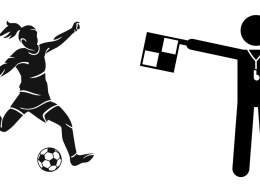In football, watching for the offside and the ball going out of play is crucial, whether you’re a player, referee, or an enthusiastic spectator. Here’s how you can stay sharp and spot these moments like a pro:
Understand the Offside Rule
To track offsides, remember the basics: a player is offside if they are closer to the opponent’s goal than both the ball and the second-last defender when the ball is played. Keep your focus on the positioning of the attacking players and the defensive line. If you’re refereeing or assisting, staying in line with the second-last defender gives you the clearest view.
Stay Focused on the Ball Near the Touchlines
When the ball is near the sideline or goal line, pay attention to its position. If the entire ball crosses the line, it’s out of play—no part of the ball should touch or hover over the line. Being positioned close to the action can help you make accurate calls.
Anticipate Movement
Good anticipation is key. For offsides, watch how the play develops and how the attacking players move relative to the defenders. For the ball going out, keep your eyes on fast-paced passes or crosses near the boundaries.
Use Visual Cues
Lines on the pitch are your guide. Offside judgments rely heavily on aligning players with the painted lines. For out-of-play decisions, look closely at the ball’s position relative to these boundaries.
Practice and Build Your Awareness
The more you watch or play football, the easier it becomes to notice these moments instinctively. Reviewing match footage or observing experienced referees in action can sharpen your skills.

